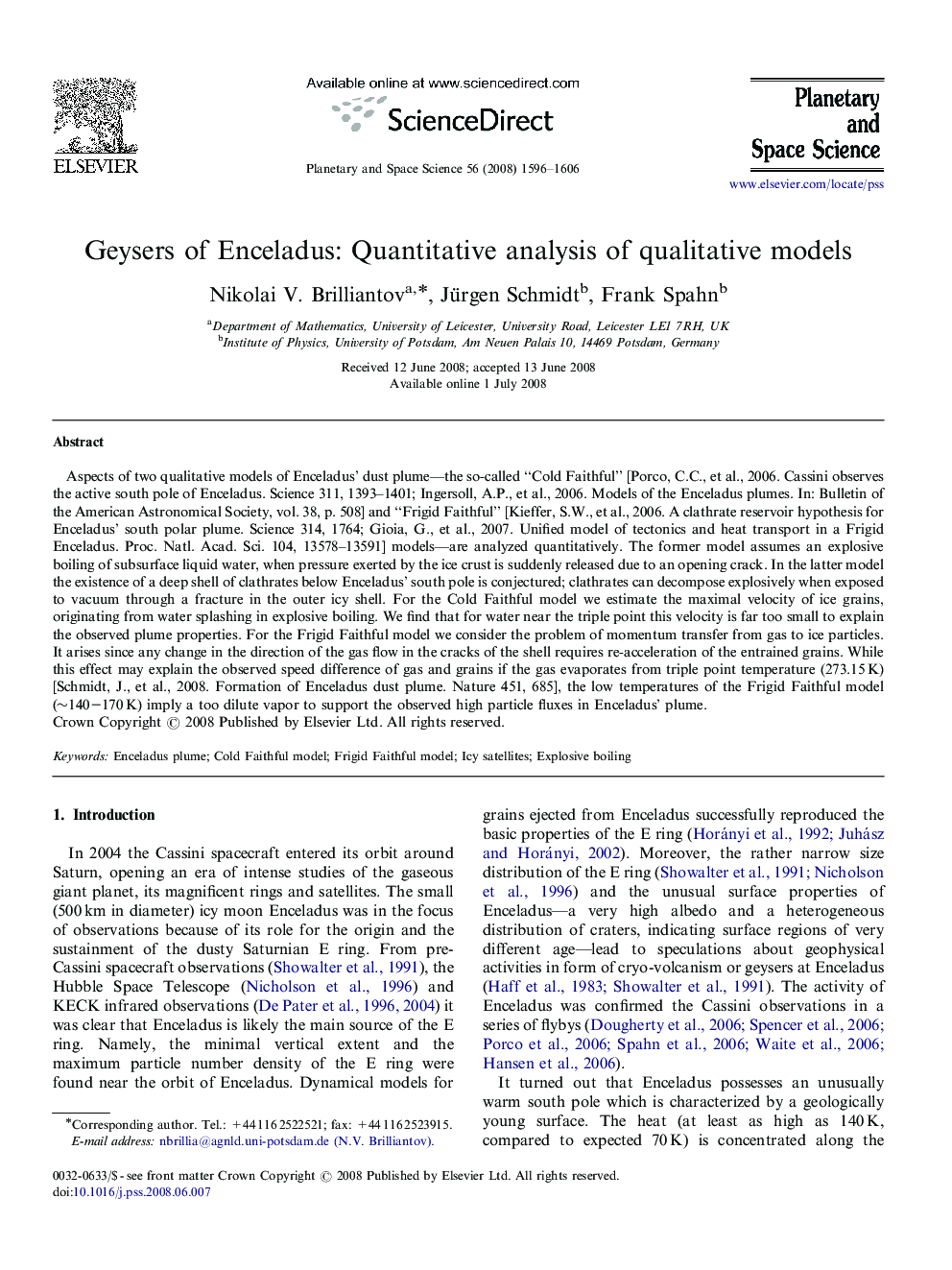| Article ID | Journal | Published Year | Pages | File Type |
|---|---|---|---|---|
| 1782029 | Planetary and Space Science | 2008 | 11 Pages |
Aspects of two qualitative models of Enceladus’ dust plume—the so-called “Cold Faithful” [Porco, C.C., et al., 2006. Cassini observes the active south pole of Enceladus. Science 311, 1393–1401; Ingersoll, A.P., et al., 2006. Models of the Enceladus plumes. In: Bulletin of the American Astronomical Society, vol. 38, p. 508] and “Frigid Faithful” [Kieffer, S.W., et al., 2006. A clathrate reservoir hypothesis for Enceladus’ south polar plume. Science 314, 1764; Gioia, G., et al., 2007. Unified model of tectonics and heat transport in a Frigid Enceladus. Proc. Natl. Acad. Sci. 104, 13578–13591] models—are analyzed quantitatively. The former model assumes an explosive boiling of subsurface liquid water, when pressure exerted by the ice crust is suddenly released due to an opening crack. In the latter model the existence of a deep shell of clathrates below Enceladus’ south pole is conjectured; clathrates can decompose explosively when exposed to vacuum through a fracture in the outer icy shell. For the Cold Faithful model we estimate the maximal velocity of ice grains, originating from water splashing in explosive boiling. We find that for water near the triple point this velocity is far too small to explain the observed plume properties. For the Frigid Faithful model we consider the problem of momentum transfer from gas to ice particles. It arises since any change in the direction of the gas flow in the cracks of the shell requires re-acceleration of the entrained grains. While this effect may explain the observed speed difference of gas and grains if the gas evaporates from triple point temperature (273.15 K) [Schmidt, J., et al., 2008. Formation of Enceladus dust plume. Nature 451, 685], the low temperatures of the Frigid Faithful model (∼140–170K) imply a too dilute vapor to support the observed high particle fluxes in Enceladus’ plume.
